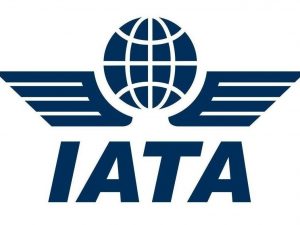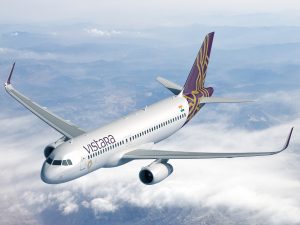Global passenger traffic demand in September rose 5.7 per cent compared to the same month in 2016, according to IATA’s global passenger traffic results. This was the slowest year-on-year increase since February. Domestic passenger traffic demand climbed 4.2 per cent in September compared to September 2016. India and China continued to lead all markets with double-digit annual traffic increases while elsewhere, results were mixed. Capacity rose 4.7 per cent and load factor slipped 0.4 percentage points to 82.2 per cent. “September’s growth in passenger demand was healthy, notwithstanding the impact of extreme weather events on the Americas,” said Alexandre de Juniac, IATA’s Director General and CEO. “Global economic conditions support rising passenger demand, but with higher cost inputs, the demand stimulation from lower fares has waned, suggesting a moderating trend in traffic growth.” International RPKs climbed 6.5 per cent with airlines in all regions recording growth compared to 2016. Total capacity climbed 5.6 per cent, and load factor rose 0.7 percentage points to 81.3 per cent. Asia-Pacific airlines’ traffic rose 8.7 per cent in September compared to the year-ago period, the strongest growth among regions. Capacity increased 7.8 per cent, and load factor climbed 0.6 percentage points to 78.3 per cent. A solid regional economic backdrop, helped by robust growth in China, is supporting passenger demand within the region.
Read More »Double-digit growth in India’s domestic passenger demand in Aug ’17
Indian airlines achieved a 36th consecutive month of double-digit domestic traffic growth as demand rose by 16 per cent, according to data released by the International Air Transport Association (IATA). The demand for domestic travel climbed 7.6 per cent this August as compared to August 2016, on pace with the 7.5 per cent growth recorded in July. Capacity rose 6.9 per cent and load factor increased 0.6 percentage points to 84.5 per cent. All markets reported demand increases with the exception of Australia. The international passenger demand for August rose 7.0 per cent compared to August 2016. All regions recorded increases, led by airlines in Latin America. Capacity climbed 6.1 per cent and load factor edged up 0.8 percentage points to 84.5 per cent. “Following the strong summer traffic season in the northern hemisphere, 2017 is on course to be another year of strong traffic growth. However, some important demand drivers are easing, particularly lower fares. As we head towards the end of the year we still expect growth to continue, but potentially at a slower pace,” said Alexandre de Juniac, Director General and CEO, IATA. The global passenger traffic data for August indicated that demand climbed 7.2 per cent as compared to August 2016. The total capacity increased by 6.3 per cent and load factor climbed 0.7 percentage points to 84.5 per cent, which was just below the record for the month set in 2015.
Read More »Vistara completes IATA audit on compliance with international safety standards
Vistara has completed the International Air Transport Association (IATA) Operational Safety Audit or IOSA, cementing its status as one of the world’s safest airlines. The audit confirms Vistara’s compliance with internationally approved aviation safety standards across multitudinous parameters in operational management and control systems, including corporate organisation and management, flight operations, operational control, cabin operations, aircraft engineering and maintenance, ground handling, cargo operations and operational security. Vistara joined IATA’s IOSA Registry on September 25, 2017. Commenting on the achievement, Phee Teik Yeoh, Chief Executive Officer, Vistara, said, “At Vistara, maintaining operational excellence is a business imperative, engrained in our DNA. Safety and security are the most important aspects of it, and so they remain our highest priorities in everything we do. Achieving this milestone in so little time in our journey of less than three years is a testament to our commitment to delivering a safe and seamless flying experience to millions of our customers.” Inclusion of the airline in the list of operators to have completed the IOSA means the recognition of Vistara by the global aviation industry as a safe and secure airline that meets the strictest international requirements. The total accident rate for IOSA carriers between 2011 and 2015 was 3.3 times lower than the rate for non-IOSA operators.
Read More »Air travel recorded fastest first-half growth in 12 years
Demand for domestic travel climbed 8.2% in June compared to June 2016, up slightly from the 7.9% growth seen in May. India led all markets with a 20.3% rise in domestic traffic in June. However, the very strong upward trend in traffic has slowed since the country’s unexpected ‘demonetisation’ in November 2016. India’s streak of year-on-year double-digit traffic growth may have ended with June. June capacity increased 7.0%, and load factor rose 0.9 percentage points to 84.3%. In a nutshell, air travel recorded its fastest first-half growth in 12 years, pushing load factors to record highs. And the peak northern summer travel season is likely to be record-breaking. The International Air Transport Association (IATA) announced global passenger traffic data for June showing that demand (measured in total revenue passenger kilometers or RPKs) rose by 7.8% compared to the year-ago period. “This is all good news. The demand for travel is strong and that, in turn, will make a positive contribution to the global economy. This growth will also further expose infrastructure deficiencies. In every part of the world airport and air navigation infrastructure is struggling to cope with demand. There are plenty of examples linking connectivity and economic prosperity. But few governments have been able to deliver on the imperatives of sufficient capacity, quality aligned with user needs and affordability. This year’s strong growth is a reminder that there is no time to lose,” said Alexandre de Juniac, IATA’s Director General and CEO. June capacity (available seat kilometers or ASKs) increased by 6.5%, and load factor rose 1.0 percentage point to 81.9%. For the first six months of 2017, the industry experienced a 12-year high in traffic growth (7.9%) and a …
Read More »Indian domestic aviation market sees 17.7% growth in May ‘17 y-o-y
India climbed back to the top of the domestic aviation growth chart in May with a 17.7 per cent year-on-year increase, as per IATA’s Air Passenger Market Analysis. This marks the 33rd consecutive month of double-digit RPK growth. However, the very strong upward SA traffic trend has slowed since the unexpected ‘demonetisation’ in November 2016, in line with the wider impact that this looks to have had on economic activity. Business confidence surveys have recovered somewhat in recent months, particularly on the services side. However, the upward trend in domestic RPKs has slowed to an annualised rate of around 7 per cent over the past six months. Year-on-year growth in global RPKs slowed to (a still robust) 7.7 per cent in May, having reached a six-year high of 10.9 per cent in April. Industry-wide RPKs have now grown by 7.9 per cent year-on-year so far this year compared to the same period in 2016. This is equivalent to annual growth of around 8.6% once you allow for the extra day in 2016 on account of it having been a leap year.
Read More »Goh Choon Phong is new IATA Chairman
The International Air Transport Association (IATA) announced that Goh Choon Phong, CEO, Singapore Airlines, has assumed his duties as Chairman of the IATA Board of Governors (BoG) for a one-year term, effective from the conclusion of the 73rd IATA Annual General Meeting (AGM) in Cancun, Mexico. Goh is the 76th Chair of the IATA BoG, and the third CEO of Singapore Airlines to hold this position. Goh succeeds Willie Walsh, CEO of International Airlines Group. Walsh will continue to serve on the BoG and the Chair Committee. “It is an honor to serve as IATA’s Chairman for the coming year. While the industry’s global profitability may be strengthening, there is more work to be done as it is not evenly spread. Security is at the top of the agenda. We must improve our partnership with governments to meet the many emerging threats. Additionally, I will be paying special attention to progressing preparations for the Carbon Offset and Reduction Scheme for International Aviation (CORSIA), driving the modernization of cargo processes, and increasing transaction volumes with the New Distribution Capability. We have a busy year ahead. I look forward to working with Alexandre and his team to represent, lead and serve the airline industry,” said Goh. Goh joined Singapore Airlines in 1990 and held senior management roles in Singapore and overseas before being appointed CEO in 2011. He was President of the 68th IATA AGM which was held in Singapore in 2011 and has served on the IATA BoG since then. IATA also announced the BoG agreed to appoint Akbar Al Baker, CEO of Qatar Airways, to serve for a one-year term as Chairman of the IATA BoG from June 2018, following …
Read More »10.7% growth in global air passenger traffic in April’17 over April’16
Global passenger traffic for April 2017 increased by 10.7 per cent as compared to April 2016, which was the fastest pace in six years, according to data provided by International Air Transport Association (IATA). The international passenger demand in April 2017 rose 12. 5 per cent as compared to April 2016, with all regions recording double-digit year-over-year traffic increases for the first time in 12 years. Total capacity climbed 7.7 per cent and load factor climbed 3.5 percentage points to 81.5 per cent. Demand for domestic travel climbed 7.7 per cent in April compared to April 2016, while capacity increased 6.2 per cent, causing load factor to rise 1.2 percentage points to 83.0 per cent. All markets reported demand increases with the exception of Australia, which showed a 2.1 per cent decline. IATA attributed the strong performance to a pick-up in global economic activity and lower airfares. After adjusting for inflation, the price of air travel in the first quarter was around 10 per cent lower than in the year-ago period and it was estimated that falling airfares accounted for around half the demand growth in April. However, it was also noted that the cabin ban on the carriage of large portable electronic devices (PEDs) from 10 Middle Eastern and African airports to the US seemed to have weighed down Middle East-North America passenger traffic. “April showed us that demand for air travel remains at very strong levels. Nevertheless there are indications that passengers are avoiding routes where the large PED ban is in place. As the US Department of Homeland Security considers expanding the ban, the need to find alternative measures to keep flying secure is critical. If the …
Read More »Passenger demand hits 5-year peak in January
The International Air Transport Association (IATA) announced global passenger traffic results for January 2017 showing demand (revenue passenger kilometers) rose 9.6% compared to January 2016. This was the strongest increase in more than five years. Domestic air travel climbed 9.9% in January year-on-year. India led domestic all markets in year-to-year growth for the 22nd month in a row; January traffic soared 26.6%, marking the 15th consecutive month of 20%-plus annual growth. Demand is being stimulated by strong flight frequency. Capacity increased 8.7% and load factor was 80.1%, up 0.9% percentage points. January international passenger traffic surged 9.3% compared to the year-ago period. Capacity rose 7.5% and load factor climbed 1.3 percentage point to 80.3%. All regions recorded year-over-year increases in demand led by the Middle East and Asia Pacific. Asia Pacific carriers recorded an increase of 10.9% compared to January 2016, helped by the impact of Lunar New Year-related travel and solid growth on routes within Asia. Capacity rose 8.9%, pushing up load factor 1.5 percentage points to 81.4%. “2017 is off to a very strong start, with demand at levels not seen since 2011. This is supported by the upturn in the global economic cycle and a return to a more normal environment after the terrorism and political ‘shock’ events seen in early 2016,” said Alexandre de Juniac, IATA’s Director General and CEO. IATA estimates the holiday-related travel contributed up to one-half a percentage point in extra demand growth. January capacity rose 8.0%, and load factor climbed 1.2 percentage points to 80.2%. IATA (International Air Transport Association) represents some 265 airlines comprising 83 per cent of global air traffic.
Read More »Travelport becomes first GDS to receive IATA’s NDC Aggregator certification
Travelport announced that it has become the first GDS to be granted with both ‘Aggregator Level One’ certification and ‘IT Provider Level Two’ status by the International Air Transport Association (IATA) as part of its New Distribution Capability (NDC) programme. For airlines, this means that Travelport is able to fully integrate with its NDC application programme interface should the airline choose to use NDC-XML messaging to distribute and deliver their fares and products. For travel agencies and travel management companies, this means that when shopping for and booking flights via Travelport’s Travel Commerce Platform, they will have even more enhanced travel content and greater access to ancillary offers. In particular, Travelport-connected agents will be able to make ancillary sales post the original flight booking, and through their preferred agency workflows, for the first time. Travelport has also achieved the NDC-capable ‘IT Provider’ Level Two status, making it only the second organisation—and first GDS–ever to be designated as NDC certified and NDC Capable. This further expands its NDC capabilities and means that Travelport also has the option to distribute IATA NDC offers for fares and prices on behalf of the airlines electing to use IATA’s industry standards.
Read More »India’s domestic aviation market records highest growth in 2016
The domestic India market topped the growth chart for the second year in a row according to IATA’s full-year global passenger traffic results for 2016. Passenger volumes surged by 23.3 per cent in 2016 – twice as fast as the next fastest growing market, China. Although the trend slowed down due to demonetisation, airlines are scheduling strong flight frequency growth in 2017, which will translate into time savings for passengers and will have the same stimulatory impact on demand as a cut in fares. India recorded revenue passenger kilometre (RPK) expansion of 23.3 per cent and has been underpinned by additional routes and increasing flight frequencies. “Air travel was a good news story in 2016. Connectivity increased with the establishment of more than 700 new routes. And a $44 fall in average return fares helped to make air travel even more accessible. As a result, a record 3.7 billion passengers flew safely to their destination. Demand for air travel is still expanding. The challenge for governments is to work with the industry to meet that demand with infrastructure that can accommodate the growth, regulation that facilitates growth and taxes that don’t choke growth. If we can achieve that, there is plenty of potential for a safe, secure and sustainable aviation industry to create more jobs and increase prosperity,” said Alexandre de Juniac, IATA’s Director General and CEO. Asia Pacific carriers recorded a demand increase of 8.3 per cent in 2016 compared to 2015, which was the second-fastest increase among the regions. This pace is considerably ahead of the five-year growth average of 6.9 per cent. Capacity rose 7.7 per cent, pushing up the load factor 0.4 percentage points to 78.6 …
Read More » Tourism Breaking News
Tourism Breaking News



